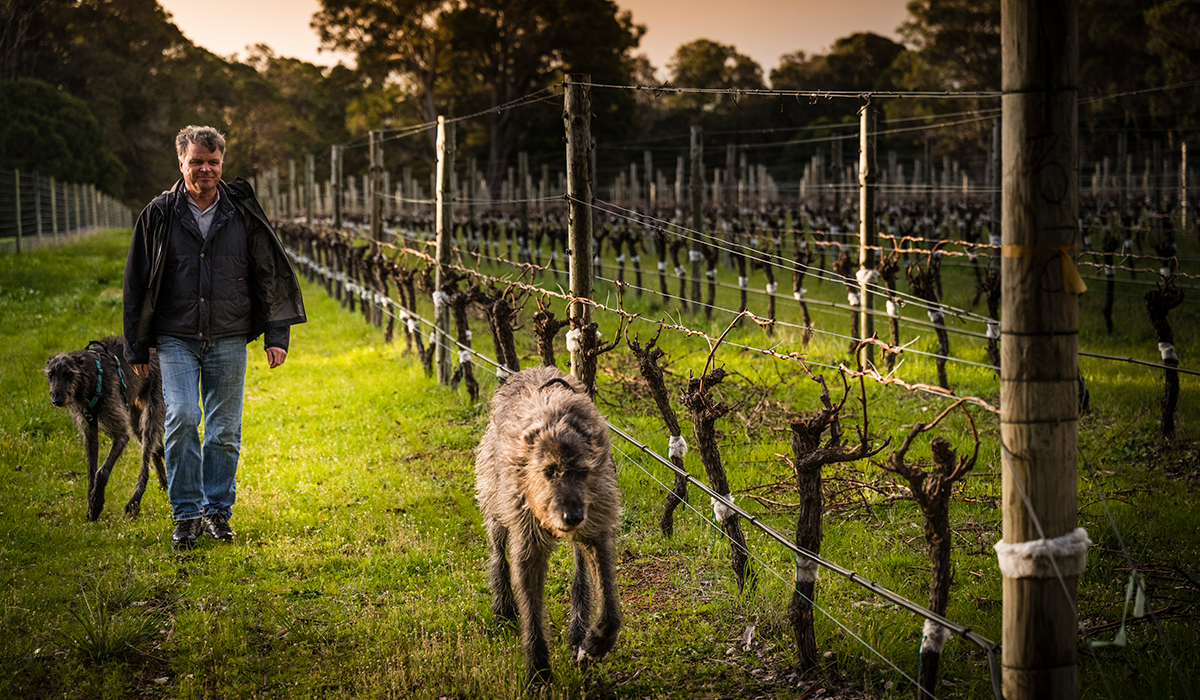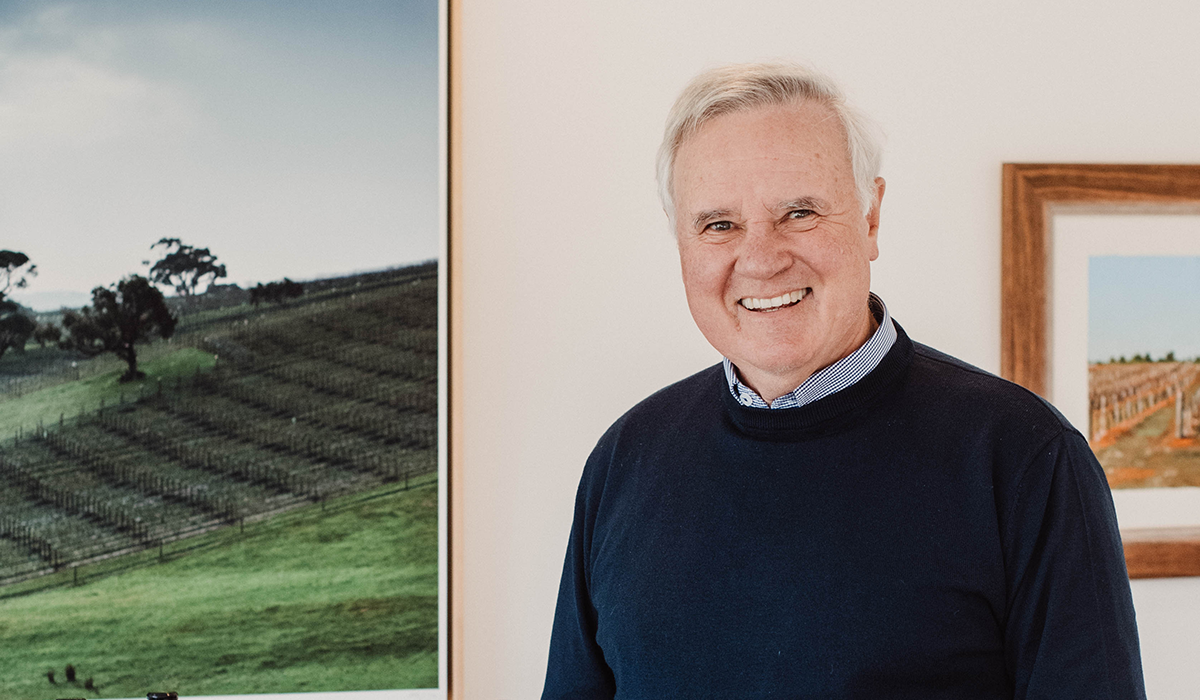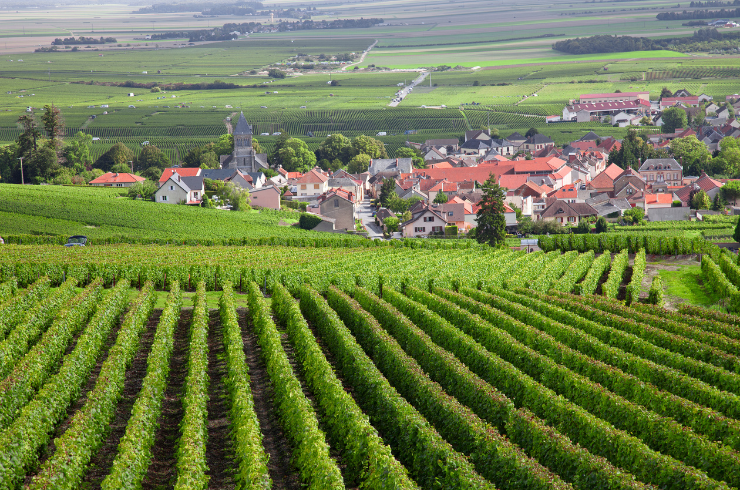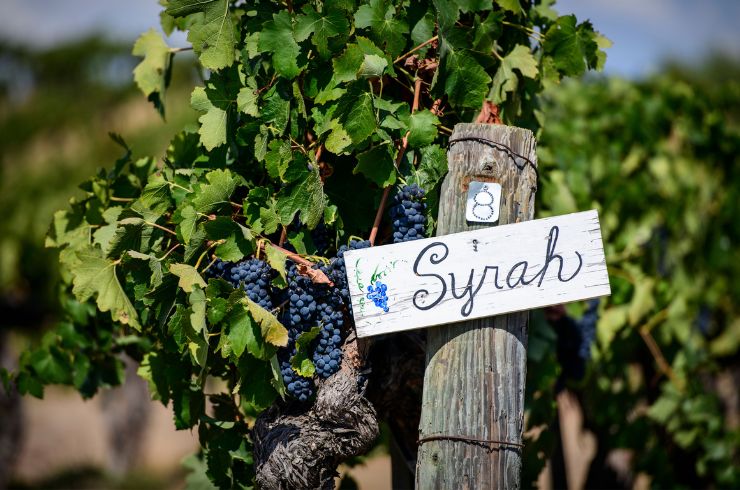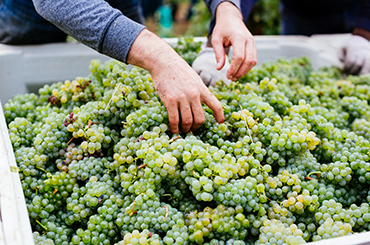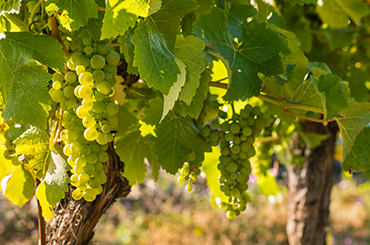These three winemakers produce distinct styles of sauvignon blanc. Sidewood's Owen Inglis grows his fruit at the apex of the Adelaide Hills, Stuart Pym of Flowstone honours Sancerre, and Geoff Weaver makes two very different wines from his cool vineyard site. We spoke to each about how they make vibrant, food-friendly examples of sauvignon in the Adelaide Hills and Margaret River.
 Winemaker Darryl Catlin and owner and vigneron Owen Inglis.
Winemaker Darryl Catlin and owner and vigneron Owen Inglis.
Owen Inglis – Sidewood, Adelaide Hills SA
H. What makes Sidewood's sauvignon blanc unique?OI. Starting in our estate vineyards, our fruit is grown in some of the coldest conditions at one of the highest points in the Adelaide Hills. The intention is to produce a wine that is refreshing and clean. This style is filled with complex layers of pink grapefruit, passionfruit, lemongrass and lime zest, without the aggressive herbaceous element that can sometimes overpower the subtle components found in sauvignon blanc.
H. How do you approach the winemaking process?
OI. Starting in the vineyard we make sure the fruit is of the highest quality. We do this by cropping lower yields, and concentrating on flavours. Once picked, no sulphur is added to the bins, which are immediately taken to our winery (just a short distance from our vineyard). Grapes are cooled before ferment, which guarantees a slower and more delicate process. The result is pronounced and clean, with pure aromatics.
With each vintage our wine may change slightly, as the season dictates, but we strive for consistency year on year. Using our estate-grown fruit and our own winery and bottling line means we have control over every step of the process as well as the assurance of the highest possible quality.
H. How should this wine be served?
OI. This crisp and fresh style is layered with clean, intense flavours and mouthwatering acidity. This wine is best chilled and served from an ice bucket on a warm summer evening, and shared with good company and food. The refreshing nature of the sauvignon makes it a useful tool for food matches, and a winner at long lunches and dinner parties.
Stuart Pym – Flowstone, Margaret River WA
H. What makes Flowstone's sauvignon blanc unique?SP. Our vineyard is in a climatic sweet spot for sauvignon blanc at the cooler southern end of the Margaret River region. Combined with deep gravel loam soils, old vines, and moderate yields, the vineyard consistently delivers sauvignon that is a perfect balance of potent fruit notes, florals and herbs. The fruit weight is always substantial, which allows for a complex wine style. Fermentation in oak includes high juice solids and indigenous yeast to build wine structure and complexity without distracting from the purity of the varietal notes.
H. How do you approach the winemaking process?
SP. The single vineyard source of Flowstone Sauvignon Blanc is now 25 years old and confidently yields high-quality grapes from vintage to vintage that set the wine's tone and style. The winemaker's role is custodial, preserving and subtly embellishing what the vineyard has grown. All our winemaking techniques – from whole-fruit pressing and spontaneous fermentation to lengthy maturation on lees – are simple and gentle.
A visit to Sancerre and Pouilly Fumé in 2004 showed me sauvignon blanc doesn't have to be brash and in your face – it can have poise, subtlety, good flavour, complexity, and refinement. Our gentle winemaking approach to fine-quality fruit delivers these attributes in the final wine. The Flowstone Sauvignon Blanc is my journey in discovering and displaying a sophisticated Margaret River sauvignon blanc.
H. How should this wine be served?
SP. To savour and enjoy the layers, textures and subtleties in flavour and aroma, give yourself plenty of time and surround yourself with sauvignon blanc lovers.
Serve Flowstone Sauvignon Blanc in a glass with a narrow opening to retain the potent fruit notes, delicate florals and herbs, then channel all the pleasure to the middle of your palate. Drink at 15–17 degrees for complete organoleptic appreciation or between 10–12 degrees for outright drinking pleasure.
Geoff Weaver – Geoff Weaver, Adelaide Hills SA
H. What makes Geoff Weaver's sauvignon blanc unique?GW. Our combination of cool vineyard site and low-yield dry-grown vines are a good start. Add hand pruning and picking and careful, non-extractive winemaking and we have the fundamentals for fine sauvignon. Picking at precisely the right point where there are no green vegetal or overripe tropical flavours is crucial. Natural acid is high and gives savoury balance to the wine.
I make two sauvignon styles. The Weaver Sauvignon Blanc with no oak, and the Ferus – a wild yeast, barrel ferment, lees aged style. The emphasis on the tank ferment wine is on freshness and lively flavours. The Ferus is more akin to chardonnay with extra richness derived from yeast lees contact, although there is no new oak so no oak flavour is imparted – I love them both. Naturally there is vintage variation but we have two central themes well established.
H. How do you approach the winemaking process?
GW. Hand-harvested grapes are crushed, chilled and air bag pressed to tank. The juice is settled and clear juice is racked to ferment and fermented to dryness. Our aim is to retain the fresh, delicate aromatics and not to complicate the pristine fruit. We do not need acid additions to ameliorate.
H. How should this wine be served?
GW. Serve the 2022 Weaver at between 5–10 degrees, pour a large glass and swirl to unlock the full aroma. Enjoy with seafood and great friends.
Image credit: Wine Australia.
Latest Articles
-
News
The power of perspective: Ryan Ponsford's Entropy
2 Dec 2025 -
Events
Halliday Wine Academy: Wine Immersion Tours
30 Nov 2025 -
Travel
Scenic's Southern France and Bordeaux river cruises are tailor made for wine lovers
30 Nov 2025 -
News
What’s in a name? The etymological origins of popular grapes.
30 Nov 2025
